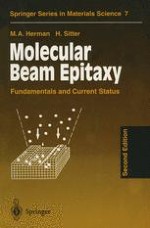Molecular Beam Epitaxy describes a technique in wide-spread use for the production of high-quality semiconductor devices. It discusses the most important aspects of the MBE apparatus, the physics and chemistry of the crystallization of various materials and device structures, and the characterization methods that relate the structural parameters of the grown (or growing) film or structure to the technologically relevant procedure. In this second edition two new fields have been added: crystallization of as-grown low-dimensional heterostructures, mainly quantum wires and quantum dots, and in-growth control of the MBE crystallization process of strained-layer structures. Out-of-date material has been removed.
